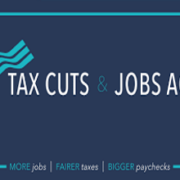Small Business Budget Savvy
As a small business owner, you know how imperative it is for your business to save money. Entrepreneurs need to be nimble, resourceful, and creative to keep the business robust enough to survive the ever-changing tides of a changing global economy.
With gross receipts of less than $1 million annually, small businesses often live with very tight margins, cash flow fluctuations and more dramatic ebbs and flows in sales volumes. Having money to fall back on during the rainy seasons can really help a business remain steady while the storm passes, or bounce back after a challenging period. There are a number of strategies to help save money and increase cash flow to grow your business.
- Turn out the lights. Seriously. Electronic waste is one of the more obvious and costly ways a business can lose money without really noticing. Lights, computers, and machines kept running for long periods when they are not in use can quickly increase costs on your monthly electric bills. Wherever possible, invest in motion lights and energy-saving bulbs and talk seriously with your employees about shutting down computers and other machinery at the end of a day. Local electric companies have business savings programs that include on-site evaluations and rebates for switching older fluorescent lighting to energy-saving dimmable LED lights that are not only more cost-efficient, but can help with harsh lighting and even reduce eye strain and migraines in employees.
- Shop around and negotiate. Before you dish out money on supplies, equipment, or services, shop around. Check out other companies selling similar products or services and compare their quality, prices, and offers. Many people spend more on products or services that they could have purchased for less elsewhere. Ask about discounts and don’t be afraid to negotiate with your suppliers.
- Lease equipment. Depending on your business needs and how your write off your purchases, it may make sense to lease equipment versus buying it outright. Leasing allows you to pay less than full market price for the item(s), the ability to turn it in for upgrades sooner with less costs, include maintenance costs into the lease, and if you wish to purchase the item at the end of the lease, negotiate the value upon purchase. Conversely, leasing may add up to higher end costs for the item and if it is a long-term lease, you may end up owning the item for longer than your originally intended, so be sure you buy quality items that will outlast their lease agreement.
- Use recycled or used supplies or equipment whenever possible.
- Know your tax deductions. Your business may qualify for several tax deductions each year. Make sure you understand your tax situation and plan for purchases, rebates and other tax incentives in advance of any new initiatives.
- Watch your spending. It is easy to get carried away with your spending – you may not need an expensive piece of abstract art for your waiting area when there are many less expensive, just as lovely options available. On the other hand, that piece may translate to added value and customer appeal, depending on the kind of business you’re running. You know what you need and what you don’t – don’t spend money on items that are really unnecessary and that won’t redeem their worth.
- Use electronic communication methods such as e-mail, GoTo Meetings, and Video conferences whenever possible. Not only can to reduce travel expenses to clients, but you can save countless hours of lost travel time out of the office by working virtually. Sometimes you do need to make those face-to-face meetings with clients, so make those meeting opportunities really count. Send a set agenda, so clients can budget their time accordingly and you can add additional client visits on your journey. For other times, a video conference will do the trick saving you and your client the additional time out of work. Take advantage of the technology available to you – it will save you the cost of manhours, travel, and lost productivity.
- Use bulk shipping and mailing. By scheduling your shipments for certain times or days, you can take advantage of lower delivery expenses as well as special post office rates.
A small business accountant can help you identify where in your budget you may be spending too much and pinpoint areas you might be able to save more. PASBA lists their small business accounts in an online directory. There are Charlotte Accountants, El Dorado Accountants and Eugene Accountants plus many more in other cities.
PASBA member accountants bring the collective resources of a nationwide network of Certified Public Accountants, Public Accountants, Enrolled Agents and other practitioners available to answer your tax and financial questions and streamline your business accounting, bookkeeping, and payroll operations. To find a trusted accountant in your area, visit www.SmallBizAccountants.com.
Please be advised that, based on current IRS rules and standards, any advice contained herein is not intended to be used, nor can it be used, for the avoidance of any tax penalty that the IRS may assess related to this matter. Any information contained in this article, whether viewed or subsequently printed, cannot be relied upon as qualified tax and accounting advice. Any information contained in this article does not fall under the guidelines of IRS Circular 230.
Copyright Information 2011 Professional Association of Small Business Accountants






